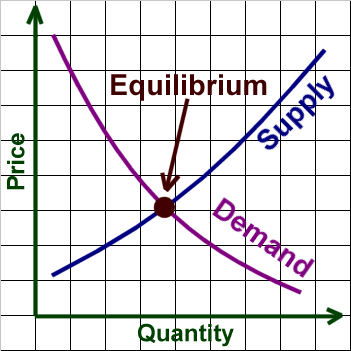Growing at Home - Economics for Kids
There’s a lot going on in our world today and it’s good for our kids to understand the world around them. Today we are going to talk about how to teach our kids the basics of economics. Money can be a challenging topic to discuss with kids, but don’t be afraid, teaching them this now will help them grow into intelligent and successful adults.
Needs and Wants
Let’s talk about the difference between their needs and wants. This can be challenging as we’ve probably all heard at some point “I really really NEED this thing because my best friend has it and we have to match!”
Needs are things that we must have to survive, like air, water, and food. Wants are things that we would like to have, they may make our lives nicer or easier, but they’re not required for survival. This video about Larry the fish will help explain the difference between what is essential and what is not.
To understand this better, start planning your next trip to the grocery store. Make a list, as a family, of what items you need to get on your trip. Next to each item, identify together if the item is a need or a want and talk about why.
Supply and Demand
When you go to the grocery store, with your handy-dandy list that you made as a family, make sure everyone has their own copy so that your kids can write down the prices for each item. Talk about why different items have different prices by explaining supply and demand.
Supply is the amount of the product that is available. Demand is the amount that people want the product. Supply and demand determine what the price will be for the product. The video above will demonstrate how the price of something can go up and down depending on how much is available and how lowering the price will make more people interested in the item.
Suppliers want to find the sweet spot, where supply and demand will meet in the same place, this is called equilibrium.
Shortage and Surplus
Supply and Demand lead us into learning about shortages and surpluses. A shortage is when there is not enough for sale at the current price, meaning that not everyone who wants the item can buy it. A surplus is when there is too much of an item for sale at the current price. Stores want to have the perfect amount of an item so that they don’t have to experience a shortage or a surplus, that way they can make the most money and keep their customers happy. This Homeschool Pop video will break this concept down. What kinds of items have you seen a shortage of or a surplus of during our quarantine?
US News has fun ideas on how your kids can learn about money:
Rather than giving them an allowance, pay them for chores that they complete. Help them split the money they earn into spending money and savings money. Teach them why saving money is important, like starting their very own college fund, and have them keep their savings in a safe place where they can watch it grow.
Kids, call your grandparents and ask them about how much items used to cost when they were your age. Why have the prices changed? Your grandparents will also love to hear from you.
Play Monopoly, the kid’s versions work too!
Encourage your kids to give to a charity that they care about. They’ll see how giving doesn’t just help the charity, but also helps them.
When you need to make a big purchase, talk to your kids about the reasons why.
Encourage kids not to make impulse purchases but to think in terms of “buying this toy means 2 hours of chores,” to help them understand the real cost of the item.
Remember that the most important part about distinguishing needs from wants and helping your kids to understand the value of money, is being grateful for what we have and looking for opportunities to be thankful and give to others.
“The secret to having it all is knowing you already do.” – unknown author


